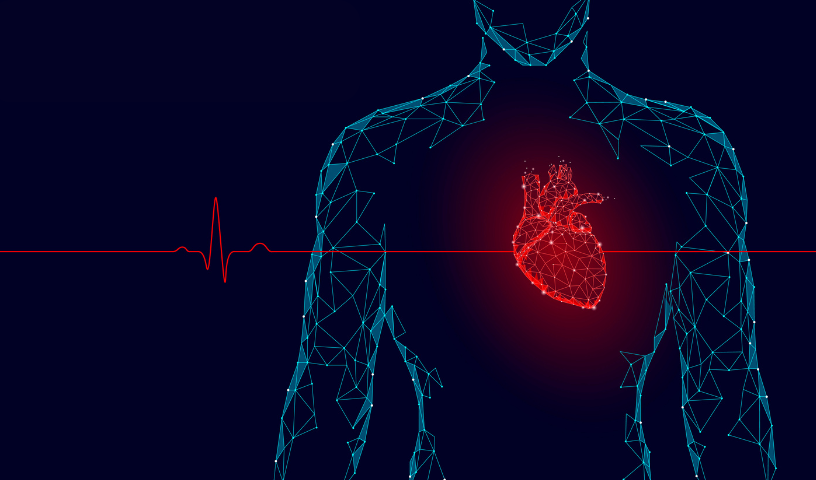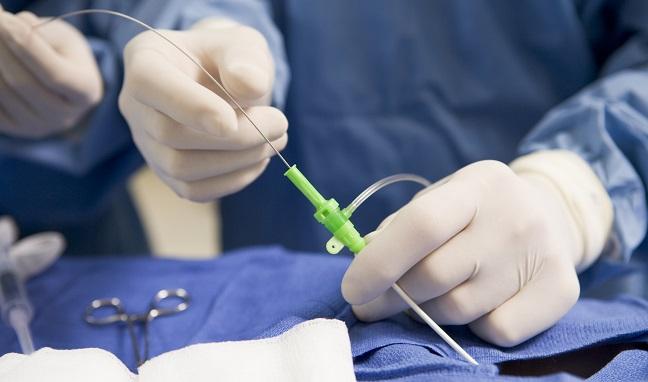How Cardiology Jupiter recommends lowering cholesterol without medication
How Cardiology Jupiter recommends lowering cholesterol without medication
Blog Article
Understanding the Significance of Cardiology in Modern Health Care Solutions
Cardiology plays an essential duty in modern healthcare, particularly as heart illness remains to be the leading reason for mortality worldwide. Developments in diagnostics and therapy have actually changed individual treatment, making it possible for earlier treatments and enhanced results. Moreover, the change in the direction of precautionary cardiology equips individuals to manage their health proactively. As innovation remains to develop, the integration of innovative solutions might additionally redefine cardiology's effect on public health and wellness, prompting a closer exam of arising patterns and their implications.
The Prevalence of Cardiovascular Disease and Its Influence on Public Wellness
Although cardiovascular disease stays the leading cause of fatality around the world, its influence prolongs far past private patients to influence public health and wellness systems and economic climates. The high frequency of heart illness places a significant stress on medical care resources, necessitating boosted funding for rehab, therapy, and prevention programs. Public health and wellness initiatives need to address danger variables such as weight problems, smoking cigarettes, and sedentary way of livings, which contribute significantly to the climbing incidence of heart conditions.Moreover, the economic worry connected with heart problem is tremendous, encompassing not just straight medical expenses yet also indirect costs connected to lost productivity and premature death. Areas face difficulties in taking care of these prices, frequently causing differences in medical care access and outcomes. As the population ages and lifestyle-related dangers proceed to rise, the urgency for effective cardiology interventions ends up being vital. Subsequently, addressing heart problem is not only a matter of individual health and wellness however likewise an important public wellness top priority.
Breakthroughs in Heart Diagnostics and Imaging Techniques
Current improvements in heart diagnostics and imaging methods have actually revolutionized the field of cardiology, improving the capability to discover and keep an eye on cardiovascular disease. Techniques such as cardiac MRI, CT angiography, and echocardiography have actually come to be progressively advanced, offering detailed pictures of heart structures and functions. These methods permit the early identification of problems like coronary artery illness, cardiac arrest, and valvular disorders.Moreover, advancements in non-invasive diagnostics, such as wearable modern technology and remote tracking devices, have actually equipped patients and medical care carriers. These tools facilitate real-time monitoring of heart rhythms and other essential indicators, resulting in prompt treatments. Additionally, fabricated intelligence is being incorporated right into imaging analysis, enhancing accuracy and performance in diagnosis.
Technologies in Treatment Alternatives for Heart Conditions
Current developments in cardiology have actually resulted in substantial developments in therapy options for heart problems. These include sophisticated medical methods that boost procedural results and arising medicines that supply new opportunities for treatment. As the area advances, these developments play an essential role in enhancing person care and results.
Advanced Surgical Techniques
Technologies in surgical methods have actually changed the landscape of cardiology, providing brand-new wish for patients with heart disease. Minimally intrusive treatments, such as catheter-based interventions, have significantly lowered recovery times and medical facility remains. Strategies like robotic-assisted surgery enhance precision, enabling specialists to browse intricate anatomical structures with greater accuracy. Developments in imaging innovation help with real-time visualization during procedures, enhancing results. Transcatheter aortic valve replacement (TAVR) exemplifies an advancement in treating aortic stenosis, enabling shutoff replacement without open-heart surgical treatment. Furthermore, hybrid techniques that integrate surgical and catheter-based methods provide tailored solutions for numerous heart problems. These sophisticated surgical techniques not only boost person safety and security however likewise expand treatment alternatives, emphasizing the essential function of development in modern cardiology practices.
Arising Medicines and Therapies
As the landscape of cardiology continues to develop, arising medicines and therapies play a critical role in boosting treatment options for heart disease. Advancements such as novel anticoagulants and progressed lipid-lowering agents have actually changed the management of heart diseases, greatly lowering individual morbidity and mortality. Furthermore, the development of genetics therapies and regenerative medication provides encouraging opportunities for dealing with conditions formerly deemed incurable. Scientific tests are continuously revealing the effectiveness of these treatments, pushing the borders of conventional treatments. The combination of electronic health innovations promotes personalized medicine, permitting for customized treatment plans based on hereditary and way of living factors. Collectively, these improvements emphasize the dynamic nature of cardiology, improving individual end results and redefining standards of care in contemporary health care.
The Duty of Preventive Cardiology in Patient Care
Preventive cardiology plays a necessary duty in patient care by focusing on the recognition of threat factors that contribute to heart illness. Via lifestyle adjustment methods and very early discovery methods, doctor can properly lower the occurrence of cardiovascular occasions - Cardiology. This aggressive strategy not just boosts person end results yet additionally advertises long-lasting health and wellness
Danger Element Identification
While heart diseases remain a leading source of morbidity and death worldwide, efficient danger element identification serves as a cornerstone of preventive cardiology. Recognizing threat aspects such as hypertension, household, hyperlipidemia, and diabetes history is essential for very early intervention. Healthcare specialists use various evaluating methods to review these aspects, enabling customized precautionary measures. In addition, comprehending a patient's way of life choices, such as smoking cigarettes and physical inactivity, better notifies threat evaluations. This thorough examination allows medical professionals to develop individualized care strategies intended at mitigating dangers. By focusing on risk aspect identification, health care systems can boost client end results and reduce the general worry of heart diseases, inevitably contributing to enhanced public wellness techniques and source allocation.
Way Of Life Alteration Strategies
A wide range of researches highlights the critical function of way of life alteration strategies in decreasing cardio condition threat. These techniques include nutritional adjustments, raised exercise, smoking cessation, and weight administration. By taking on a heart-healthy diet regimen abundant in fruits, veggies, entire grains, and lean healthy proteins, individuals can lower cholesterol levels and blood pressure. Routine exercise enhances the heart and enhances general cardio health and wellness. Additionally, quitting cigarette smoking substantially lowers the threat of cardiovascular disease and enhances recovery rates for those with existing conditions. Weight monitoring further adds to cardio wellness by minimizing various other threat aspects such as diabetes mellitus and high blood pressure. Carrying out these way of life alters not only promotes specific health however likewise functions as a cornerstone of preventative cardiology in person treatment.
Early Detection Strategies
Way of living adjustments significantly add to reducing cardio illness risks, but they are most reliable when coupled with early discovery methods. Precautionary cardiology emphasizes the value of determining potential heart concerns prior to they escalate right into major conditions. Strategies such as blood pressure surveillance, cholesterol testing, and advanced imaging modern technologies like echocardiograms play important roles in reviewing cardiovascular wellness. Biomarkers and genetic screening likewise enhance the accuracy of early discovery, allowing for customized precautionary approaches. Routine heart danger analyses equip medical care suppliers to intervene proactively, possibly preventing heart click for more strikes and strokes (Cardiology care). By incorporating these early discovery approaches into regular treatment, clients can take advantage of prompt lifestyle treatments and targeted therapies, ultimately enhancing end results and enhancing lifestyle
Integrating Modern Technology Into Cardiology Practices
As developments in innovation remain to reshape various fields, the assimilation of cutting-edge tools and systems into cardiology methods has actually come to be important for improving individual treatment and outcomes. Telemedicine platforms permit cardiologists to keep an eye on individuals from another location, improving access to care while decreasing the concern on health care centers. Wearable tools, such as smartwatches, make it possible for continual heart rate monitoring, informing both individuals and doctors to possible problems in real-time. Furthermore, expert system (AI) is being made use of to evaluate large amounts of cardiac data, helping in early diagnosis and individualized therapy plans. Advanced imaging methods, including 3D echocardiography, improve visualization of her latest blog heart structures, resulting in much more accurate treatments. Electronic health records (EHRs) simplify person details administration, making sure that cardiologists have instant access to crucial information. With each other, these technological developments are transforming cardiology, advertising positive management and boosted wellness results for patients with cardio problems.
The Importance of Individual Education and Involvement
Client education and learning and engagement play a crucial function in the monitoring of cardiovascular wellness. By gearing up people with understanding concerning their conditions, therapy alternatives, and way of life changes, healthcare carriers equip people to take an active function in their treatment. This aggressive method can bring about improved adherence to recommended drugs, dietary modifications, and workout routines, ultimately minimizing the threat of complications.Engagement also promotes a solid patient-provider partnership, encouraging open communication and depend on. When people really feel informed and involved, they are more probable to voice problems and ask questions, which can result in much better professional end results. Additionally, educational resources, such as workshops or digital platforms, can improve understanding and advertise self-management approaches. On the whole, focusing on patient education this page and engagement is important for improving cardiovascular health and wellness, enhancing high quality of life, and lowering medical care expenses connected with heart diseases.
Future Patterns in Cardiology and Their Prospective Impact

Frequently Asked Questions
What Lifestyle Adjustments Can Lower Cardiovascular Disease Danger?
The present question addresses lifestyle adjustments that can considerably minimize cardiovascular disease risk. Cardiology Jupiter. Taking on a well balanced diet plan, participating in normal exercise, maintaining a healthy and balanced weight, handling tension, and avoiding cigarette can significantly improve cardio health
Just How Can I Acknowledge Early Indicators of Heart Issues?
Recognizing very early signs of heart troubles involves surveillance signs such as chest discomfort, shortness of breath, tiredness, and irregular heart beat. Timely understanding of these indicators can trigger necessary clinical evaluation and treatment for better results.
What Are the Differences Between Cardiologists and Heart Surgeons?
The differences in between cardiologists and cardiac specialists hinge on their functions; cardiologists largely manage and identify heart disease with non-invasive approaches, while cardiac specialists execute operations to deal with structural heart problems. Each plays a vital, distinct function.

Exactly how Typically Should I Get My Heart Health Checked?
The frequency of heart wellness checks differs based on individual threat variables. Normally, adults should undertake analyses every one to two years, while those with status quo may require more constant assessments as advised by health care professionals.
What Role Does Genetics Play in Heart Problem Danger?
Genes greatly influences heart problem threat, with domestic patterns indicating acquired conditions. Specific genetics can predispose people to hypertension, cholesterol concerns, and other cardio issues, highlighting the importance of hereditary screening in reviewing heart health and wellness. Heart condition stays the leading reason of death globally, its effect extends far past private people to affect public wellness systems and economies. Public wellness initiatives need to address danger factors such as weight problems, smoking cigarettes, and inactive way of livings, which contribute considerably to the climbing incidence of heart conditions.Moreover, the economic worry associated with heart illness is tremendous, encompassing not only straight clinical costs however additionally indirect expenses related to lost performance and early mortality. Precautionary cardiology plays a crucial role in client treatment by concentrating on the recognition of risk elements that contribute to heart illness. Fabricated intelligence (AI) and device knowing are improving diagnostics and person surveillance, enabling early detection of heart diseases. The differences between cardiologists and cardiac specialists exist in their duties; cardiologists largely manage and diagnose heart conditions through non-invasive methods, while cardiac surgeons perform surgical procedures to correct structural heart issues.
Report this page